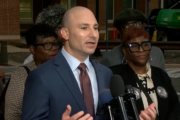Independent living is classified into six domains: hearing, seeing, mobility, communication, cognition and self-care. According to a 2019 analysis from the Administration for Community Living, more than 40% of seniors over 65 struggle to maintain their independence in at least one of these six domains.
[IMAGE]
There is a precarious balance between protecting independence while also maintaining safety and physical well-being. So, independence often becomes a point of contention between seniors and their loved ones and caregivers. Understanding the stages of independent living and the associated care available for each level is key to maintaining the optimal level of senior independence.
[SEE: The Advantages of Assisted Living.]
Independence Cultivates Overall Well-Being
Connecting seniors to a proper level of care is essential to their overall well-being.
“Research indicates that losing the ability to perform key activities of daily living on your own can negatively affect your mental health,” says Michelle Feng, a licensed psychologist and the chief clinical officer of Executive Mental Health in Los Angeles. Feng, who specializes in geriatric psychology, says that in her experience, “balancing independence and accepting support when available is key in maintaining physical and mental health as we grow older.”
Dr. Tracy Wakefield, the Las Vegas Market chief medical officer at CenterWell Senior Primary Care, echoes this sentiment and adds that loved ones can help their seniors maintain independence without hindering their safety.
She says caregivers can “encourage them to eat right and engage in regular exercise, and involve them in day-to-day decisions. Research also shows that mentally stimulating activities, even those as simple as reading, working crossword puzzles, or playing board games, can help to ward off dementia and foster a greater sense of health.”
[READ: Steps for Choosing the Right Senior Living Facility.]
Activities of Daily Living vs. Instrumental Activities of Daily Living
Activities of daily living, also known as ADLs, are important in determining the level of a senior’s independence. ADLs are in the “self-care” and “mobility” domains of independent living.
ADLs, as outlined in a 2022 article by StatPearls, are organized into basic ADLs and instrumental ADLs, or IADLs. Basic ADLs include the following:
— Mobility. This includes the ability to ambulate (walk), transfer from a bed to a wheelchair or other similar types of movement.
— Feeding. Holding a utensil, bringing the food up to the mouth, chewing and swallowing are all parts of feeding.
— Dressing. This includes being able to get dressed and undressed and use ties, zippers or buttons on clothing.
— Personal hygiene. Brushing teeth, hair grooming, nail care and bathing are some of the activities involved in personal hygiene.
— Continence. Continence is the ability to control bowel and bladder movements voluntarily.
— Toileting. Toileting involves transferring to and from the toilet and cleaning oneself.
IADLs are more advanced activities that cover a wider range of general independence. IADLs are categorized into the following:
— Shopping and transportation. The ability to organize transportation (by driving, contacting someone or using ride-sharing or taxis), as well as use a store to shop and pay for necessities are hallmarks of independence for seniors.
— Home maintenance. Home maintenance involves keeping a dwelling space tidy and cleaning up after activities, such as preparing a meal.
— Communication management. This includes the ability to make and accept phone calls, as well as manage mail.
— Medication management. This includes picking up or ordering prescriptions, and taking all prescription medications as directed.
— Financial management. Financial management involves paying bills on time and managing money and other assets.
— Meal preparation. This includes planning and preparing meals.
[READ: Top Senior Meal Delivery Services.]
Assessing the Level of Assistance
The ADLs are then assessed against the level of assistance needed. This type of functional assessment is done by a nurse or a medical provider in a health care setting and may also include self-reported data from the senior and their family/caregivers. This information is documented in the senior’s medical record and used to counsel a senior and their family regarding an appropriate level of care. The levels of independence include:
— Fully independent. This means the task can be done independently, without the assistance or planning of others.
— Minimum assist. This means the task requires a reminder (cue) from another person or the senior needs standby assistance (someone to oversee, just in case) or a physical object of assistance, such as a cane or a urinal. This level may involve light assistance with scooting or balancing.
— Moderate assist. This level of assistance requires some level of physical assistance by another person to lift or otherwise assist during the activity.
— Complete assist. The activity cannot be performed at all by the individual and must be done completely by a caregiver.
What Are the Different Levels of Senior Living?
There are many different levels of care for the elderly. After understanding what ADLs and IADLs are and how to assess them, it’s necessary to determine what level of care and assistance is needed. It’s also important to check the plan language of any Medicare or Medicare Advantage plans to understand what benefits are available to you or your loved one.
The levels of senior living include:
— Independent living or senior community living
— Assisted living
— Custodial care
— Skilled nursing care
— Short-term care/rehabilitation
— Memory care
Independent living or senior community living
Senior living communities and independent living are two distinct options for seniors.
Independent living is the default option that involves staying at one’s current residence. Senior living communities, or active adult communities, allow fully independent adults to live in areas where there is less yard maintenance and certain amenities, like a store within walking distance or access to a gym.
There is also “adult day care,” which is a non-residential facility that provides activities and safety for seniors during the day. This works well for seniors with a live-in caregiver who works during the day. These centers are also able to offer help with IADLs, like organizing transportation or providing meals.
Assisted living
Assisted living takes place in a facility with shared common spaces, but usually a private room. Assisted living residents typically are not independent with instrumental ADLs, though they are mostly independent with basic ADLs. They sometimes require some minimal assistance.
Custodial care
Custodial care is what comes after assisted living. This is also known as nursing home care. This kind of care is for individuals who are not independent with either IADLs or ADLs. These seniors require moderate or complete assistance with ADLs.
Skilled nursing care
Skilled nursing care is often confused with custodial care. Skilled nursing facilities, sometimes called SNFs, are used when a specific nursing skill is needed for care. This may include managing an active wound, administering intravenous infusions or nutrition or performing an injection. This type of care is separate from just ADLs because it involves necessary nursing or medical supervision. This type of care would be necessary for any senior who has a skilled nursing need without a family member or caregiver trained to perform that need.
Short-term care/rehabilitation
This type of care is typically necessary after an injury or surgery where there is an end goal. For example, a senior might have a tough time recovering from a double knee replacement. Short-term care and rehabilitation would be necessary until seniors met their physical therapy goals. This is for those who are independent with IADLs but need assistance with ADLs until they meet those goals.
Memory care
Memory care is specialized care for those with Alzheimer’s disease and dementia. This type of care offers safety and structure for those struggling with their memory and cognition. This is for individuals who need cues for some or all of their basic ADLs. These facilities also focus on providing activities that strengthen social skills and cognition. Depending on the memory care facility, staff may perform custodial and/or skilled nursing care.
Make sure to research the options for the best senior living facility and level of care for your loved one.
Choices to Make for Safe Independence
By evaluating how much assistance is needed with activities of daily living and matching that to a level of care, you’ll be able to find the optimal stage of independent living for yourself or your loved one. Always consult a medical provider when determining and coordinating this level of care to make sure it’s safe and ethical.
As a simple action that can be taken today, Wakefield recommends readers “help the seniors you love to stay current on doctor visits — along with routine vision and hearing exams. Up-to-date eyeglasses and hearing aids are important tools for safety, better socialization and a reduced risk of dementia.”
More from U.S. News
Decorating Tips for Assisted Living
Types of Rooms in Assisted Living Communities
Gift Ideas for Nursing Home Residents
What Are the Levels of Senior Living? originally appeared on usnews.com
Correction 01/13/23: A previous version of this misstated Dr. Tracy Wakefield’s title.







